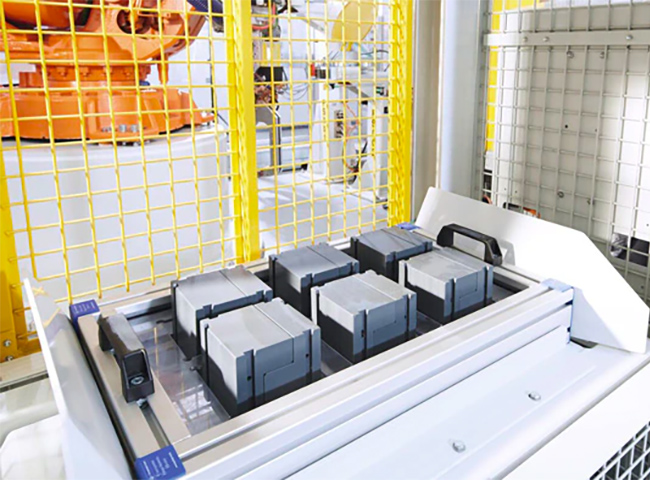
Safeguarding your Press
How CIMTEC used SICK Light Curtains to Prevent Operator Injury
A North Carolina fabrication company uses Chicago brake presses as part of their metalworking operations. A brake press is an industrial metalworking machine used to bend sheet metal. In their OEM state, these break presses do not employ any safety features to prevent injury in the case that an operator body part or other object is within the front access pinch points of the press. Cimtec developed and installed a turnkey safety system for the fabricator’s brake presses that included a light curtain in conjunction with two scanning array sensors that provide a comprehensive protective barrier during machine operation.
Cimtec’s Brake Press Safety Solution
Cimtec examined several options for the fabricator’s equipments, and opted for a multi-sensor system that will provide safety, reliability, and redundancy in operation. For each of the two brake presses, the safety system developed by Cimtec incorporates:
One SICK C4000 Advanced Light Curtain with floating blanking capability – The light curtain is positioned across the front entrance of the press in order to guard the press opening and closing pinch points. A 900mm guarded area is included with a beam (spacing) resolution of 30mm between beams.
Two S3000 Professional Safety Laser Scanners – The two safety laser scanners are fixed to the front surface of the press and positioned overhead pointing downward. The purpose of these scanners is to provide a redundant safety barrier along the entire front side of the press. The programmable features of the S3000 Professional Safety Laser Scanner will enable only one station to operate at a time.
Any attempt to access the front of the machine while a station is being operated causes a “fault” condition disabling the operation of the press. These features insure that no one can inadvertently encroach on the “blanked” area of the light curtain while an operator is using the machine.
Brake Press Operation
Four electric actuated foot pedals were provided to operate each of the four operating stations at the brake press. The foot pedals were marked with large numbers corresponding to the station which they operate. A large numeric stencil was painted on the machine indicating the station to which each foot pedal corresponds. An appropriate amount of cable was provided to allow the foot pedal to be positioned away from the press in order to handle the longest product.
The system is operated by depressing the foot pedal to activate the press in the same way as a brake press without these additional safety components added. However, the light curtain is enabled at all times providing a guarded condition of the potential pinch points of the dies.
Depressing the foot pedal at an individual station creates an “opening” in both of the safety scanner protective fields, but only at that specific station. The relays for both the safety scanners and the light curtains are wired in series. Therefore, if the operator is in the opening created by the safety scanners and has inserted the proper part in the light curtain field the system will operate. Any other interference in the field of either the safety scanners or the light curtain will cause a “fault” condition disabling the system until the “fault” condition is cleared.
Training the Safety System
The light curtain can be “trained” for a specific part that is to be processed. A “teach” button is located at one station and is used to set up the system for a specific part. The operator simply inserts the part into the light curtain field and depresses the “teach” button. The system will then “remember” the part configuration allowing only that part (including acceptable tolerance) to be inserted into the light curtain.
Cimtec’s solution for brake press intrusion detection results in improved safety for the fabricator’s brake press operators.
